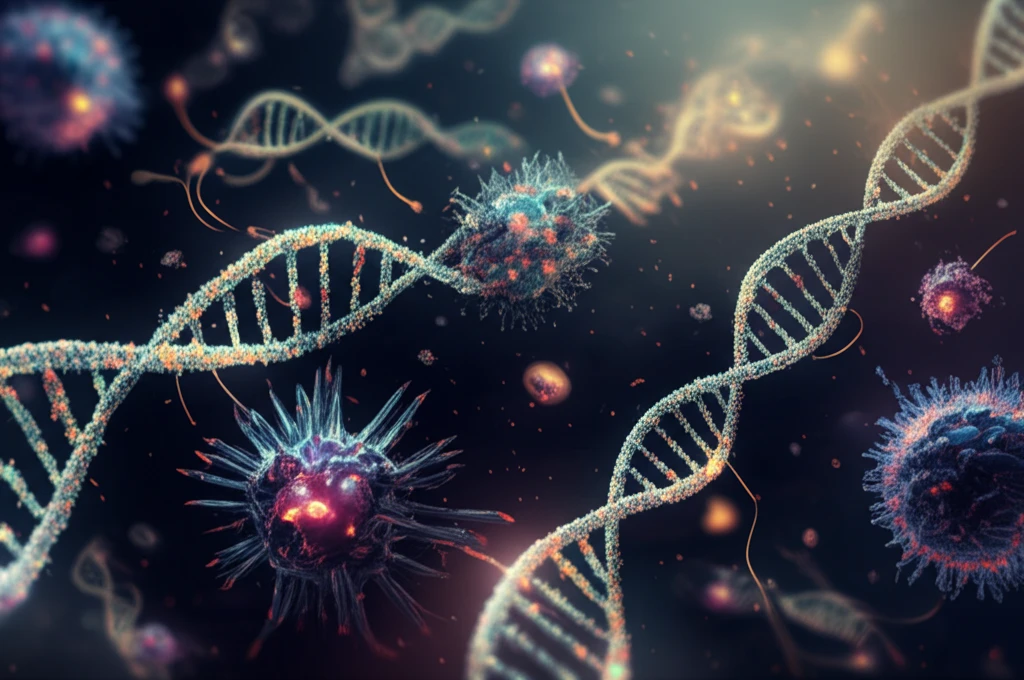
Decoding the Cellular Stress Response: How mRNA Regulation Impacts Your Health
"Unlocking the Secrets of mRNA: A Deep Dive into How Cells Manage Stress and DNA Damage"
Imagine your body as a bustling city. Every cell is a tiny factory, constantly producing proteins that keep everything running smoothly. The instructions for these proteins are carried by molecules called messenger RNA, or mRNA. When everything is running smoothly and without stress these processes carry on efficiently.
However, when stress hits—whether from pollution, a poor diet, or even just a tough workout—your cells need to adjust fast. This is where mRNA regulation comes in. It's like a cellular manager, deciding which proteins to produce more of, which to silence, and where to relocate resources to handle the crisis.
New research is revealing just how critical this process is, particularly in how our bodies respond to DNA damage. By understanding mRNA regulation, we can gain insights into everything from cancer prevention to aging.
mRNA Regulation: The Cell's Emergency Response System

So, what exactly is mRNA regulation? It's a complex process that involves several steps: transcription, translation, and mRNA location. If the DNA sustains damage these complex processes come into play.
- Stress Granules: Cytoplasmic RNA granules that are formed upon cell activation, with key modulators like Tial which can bind to p53 mRNA, and controls translational silencing and RNA granule localization.
- DNA Damage Response: When DNA is harmed, the mRNA relocates in part with the dissociation of Tial from its mRNA targets. Upon p53 mRNA is released from stress granules which increase protein synthesis in a CAP-independent manner.
- Translation Regulation: Post-transcriptional regulation that effects translation with key modulators like Tial which controls translational silencing and RNA granule localization.
- Cellular Stress: These changes in mRNA abundance, location, and translation allows cells to adapt by increasing the protein production for key modulators of the DNA damage response.
The Future of Health is in Our Genes
By understanding how our cells manage stress at the most fundamental level, through mRNA regulation, we are opening up new possibilities for preventing and treating disease. Although all results of what stress does to cellular and body, with more understanding in mRNA, can give us new ways to treat it.
